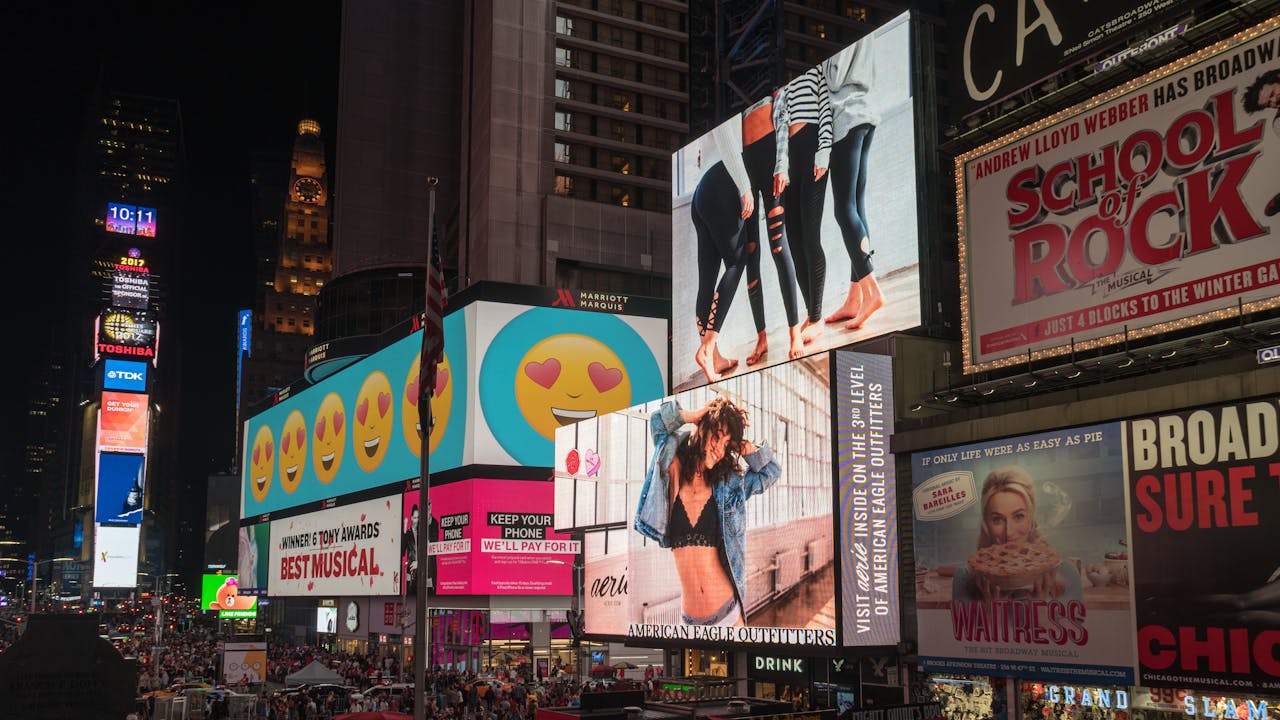In a world dominated by smartphones, streaming services, and constant digital distraction, you might expect billboard advertising to be fading into the background. But in 2025, the opposite is true. Outdoor marketing is not only surviving—it’s evolving in bold, creative, and surprisingly high-tech ways.
Far from being a relic of the past, billboard advertising is entering a new golden age, thanks to digital innovation, better audience data, and a renewed focus on storytelling. Here’s a look at what’s changing in outdoor marketing this year—and what it means for brands and consumers alike.
1. Digital Billboards Are Now the Norm
In 2025, static paper-and-paste billboards are rapidly becoming the exception. Digital Out-of-Home (DOOH) advertising has taken over cityscapes, highways, airports, and even suburban neighborhoods. These screens are sleeker, brighter, and more versatile than ever before.
What makes digital billboards so appealing to marketers is their flexibility. Brands can change content in real-time, test multiple creatives in different locations, and even rotate messages by the hour or daypart. This dynamic capability allows advertisers to respond to events as they happen—like sports results, weather changes, or trending social media topics.
From a visual standpoint, digital displays are more engaging. With motion graphics, animations, and even subtle video loops, they break through the visual noise in a way traditional boards never could.
2. Programmatic Buying Comes to the Streets
One of the biggest shifts in 2025 is the rise of programmatic advertising in the Out-of-Home space. What used to be a slow, manual process—booking locations weeks or months in advance—has now become automated, data-driven, and nimble.
Programmatic DOOH allows advertisers to buy billboard space using real-time bidding, similar to how online display ads are purchased. This means campaigns can be launched and adjusted almost instantly, with better targeting and more control over spend.
For example, a coffee brand can set ads to run on digital boards near transit stations only during morning rush hour, or a concert promoter can target specific neighborhoods in the days leading up to a show. This kind of precision was unimaginable just a few years ago, and it’s changing how marketers think about outdoor.
3. Billboards Are Smarter—and More Personalized
Thanks to advancements in location data and AI, billboard advertising is becoming more context-aware. While privacy regulations still prevent billboards from targeting individuals directly, advertisers can now tailor messages based on aggregate audience behavior and environmental factors.
Smart billboards in 2025 can adapt content based on the time of day, foot traffic, weather conditions, or even traffic flow. A sneaker brand might highlight waterproof designs on a rainy day, while a travel agency could promote weekend getaways on a sunny Friday afternoon.
Some billboards are even equipped with sensors or cameras (within legal and ethical boundaries) that gauge engagement levels—like how many people stop to look, or how long they linger. This kind of feedback loop allows advertisers to refine their creative and strategy on the fly.
4. Sustainability Takes Center Stage
Environmental concerns are influencing every industry in 2025, and outdoor advertising is no exception. Brands and media companies are under pressure to demonstrate that their billboard campaigns are eco-conscious.
We’re seeing a shift toward solar-powered billboards, energy-efficient LED displays, and recyclable materials for static installations. Some companies are even exploring “green billboards” that double as vertical gardens or air purifiers—merging advertising with environmental design.
Sustainability is no longer a bonus; it’s an expectation. Consumers are watching, and they’re more likely to support brands that show genuine commitment to reducing their environmental footprint—even in the way they advertise.
5. Creative That Feels Like Art, Not Ads
As people grow savvier and more ad-averse, brands are rethinking the tone and purpose of their billboard content. In 2025, it’s not enough to shout; you have to connect.
That’s led to a wave of billboard creative that feels more like public art than traditional marketing. We’re seeing minimalist design, poetic copy, and imagery that tells a story rather than pushes a product. Some brands even collaborate with local artists or illustrators to create campaigns that feel authentic and culturally resonant.
The best billboard ads in 2025 are the ones people stop to photograph and share—not because they were sold something, but because they felt something. In this way, outdoor marketing is merging with culture, rather than interrupting it.
6. Integration With Digital Campaigns
Another major trend this year is the tighter integration between billboard campaigns and digital platforms. A billboard might feature a QR code that leads to an AR experience, or prompt a social media challenge. Others use geofencing to trigger related ads on your phone when you pass a certain location.
This convergence of physical and digital marketing—sometimes called “phygital”—allows for a richer brand experience. It’s no longer just about impressions; it’s about interaction. And with advanced analytics, marketers can now better measure how billboard exposure influences online behavior and sales.
7. Hyperlocal and Community-Focused Campaigns
National campaigns still have their place, but in 2025, there’s growing emphasis on hyperlocal outdoor advertising. Brands want to speak to people where they are—not just geographically, but emotionally and culturally.
We’re seeing brands customize messaging for individual neighborhoods, using local references, languages, or causes that resonate with the community. In some cases, brands use billboards to support local nonprofits or highlight neighborhood events. It’s smart marketing, but it’s also good PR—and consumers appreciate the personal touch.
A Bright Future in a Digital World
While many predicted that digital advertising would render billboards obsolete, the opposite has happened. In a landscape overflowing with screens and scrollable content, the physicality of a billboard offers something rare: presence.
In 2025, outdoor advertising is more creative, data-savvy, and socially aware than ever. It’s not just selling products—it’s shaping culture, beautifying cities, and starting conversations. As brands continue to rethink their strategies, the humble billboard stands tall—not as an outdated medium, but as one of the most exciting canvases in modern marketing.


Leave a Reply